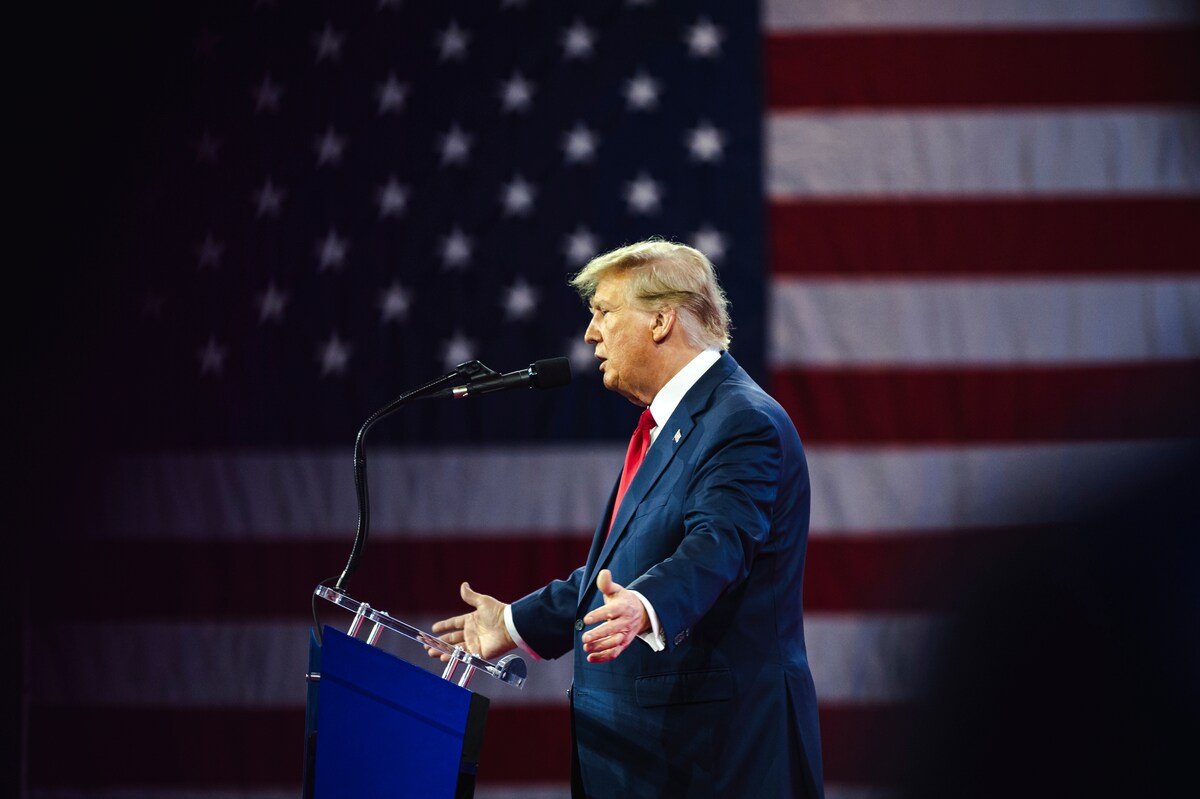Gold has enjoyed a year-long rally driven by rising central bank purchases, geopolitical tensions, and declining interest rates. Expectations that those supporting factors will persist led many analysts to project further gains in the price of gold. For instance, Goldman Sachs expects bullion to reach $3,000 per ounce by the end of 2025. However, this rally has recently reversed amid concerns that Donald Trump’s proposed tariffs and immigration could reignite inflation.
To gauge the impact of Trump’s election on gold prices, we need to look at the market’s overall performance, including the U.S. dollar‘s strength, inflation risks, and interest rate projection, in addition to investor sentiment and preference.
Dollar strength hinders bullion rally
Among the most notable factors impacting gold prices recently is the surge in the U.S. dollar index. The dollar soared to a four-month high on Wednesday last week after Republican Donald Trump won the U.S. presidential election and as surging yields boosted the index. Trump beat Democrat Vice-President Kamala Harris, retaking the White House while Republicans also won a U.S. Senate majority. The dollar index today gained 0.19 percent, recording 105.74.
“Trump’s victory in the U.S. presidential election is being perceived as a headwind for gold as most of Trump’s policies are believed to have the potential to revive inflationary pressures. Under Trump’s administration, market participants see a risk of fewer Fed rate cuts than originally anticipated. As a result, hedge funds have pared their bullish bets on the precious metal to a 12-week low,” stated Vijay Valecha, chief investment officer, Century Financial.
A full sweep by Republicans would allow the party to make larger legislative changes. This, in turn, would likely provoke larger currency moves. Trump’s policies on restricting illegal immigration, enacting new tariffs, lowering taxes, and deregulation may boost growth and inflation and halt the Federal Reserve’s ability to cut rates. Non-yielding assets like gold tend to lose their appeal in a high-interest rate environment, pushing investors to place their bets on other riskier assets.
Higher inflation levels may force the Fed to a slower easing path, further supporting the dollar.
U.S. economic concerns arise
The resounding victory of Trump in the elections led to a sharp decline in gold prices as traders booked profit. Some selling emerged on concerns over a possible rise in the U.S. fiscal deficit and his stance of stimulating U.S. growth, which would warrant huge borrowings and push up the U.S. yields.
U.S. borrowings would further support U.S. yields and the dollar index. In addition, Trump’s tax cut proposals would also increase borrowing as potential tariffs on trading partners are unlikely to fund the resulting fiscal deficit.
Analysts expect U.S. yields to continue their upward movement in the short-term, which will continue supporting the dollar and placing downward pressure on gold. Despite not playing a major role in the movement of gold prices in the past, these traditional drivers will likely remain relevant in the near term. These factors along with mild ETF outflows are likely to act as headwinds for the yellow metal.
During this tenure, Trump also promises to ease tensions and regional conflicts in the Middle East and Russia, potentially reducing the supportive impact of geopolitical uncertainty on gold prices.
Bullion under Trump’s first tenure
Since 1976, the election of a Republican administration has led to an average 4.5 percent decline in the price of gold within 60 days compared to an average 3.8 percent rise for a Democrat win.
During Trump’s presidency, gold prices rose substantially, increasing from $1,209 when he assumed office on January 20, 2017, to $1,839 on his final day, which was January 19, 2021. While these gains can’t be directly attributed to Trump, his policies helped shape the geopolitical landscape both in the U.S. and abroad. During his presidency, trade wars with both allies and competitors were in focus.
China was a key target for Trump. While tariffs on Chinese goods were already in place, his administration applied new restrictions to more items, including steel, electric vehicle batteries, and consumer goods. Relations with India also fractured and the country lost its preferential trade status with the US. He also withdrew from the Iran nuclear treaty and imposed punishments on anyone who traded with Iran.
One other factor that drove the gold price during Trump’s term was the outbreak of the COVID-19 pandemic and government policies put in place to support citizens and the economy. For instance, Trump oversaw multiple stimulus efforts, including packages announced in March 2020 and December 2020. These actions led many to turn to gold as a safe haven out of concern for a weakening U.S. dollar.
Read: UAE, global gold prices hover near one-month low ahead of key U.S. data, Fed comments
Future outlook
Gold prices seem to be on a downward trajectory in the short term on the heels of the U.S. election. “Nevertheless, there are many fundamental factors that have driven gold to a 30 percent gain this year, which still remain in force. For instance, central bank purchases are strong, particularly in emerging economies. Although China halted its 18-month-long gold-buying spree for the sixth straight month in October, analysts believe they were likely deterred by high prices. Global uncertainty, a flare-up in geopolitical tensions, and deficit spending in the U.S. – could potentially trigger a flight to safety,” added Valecha.
For more news on markets, click here.








